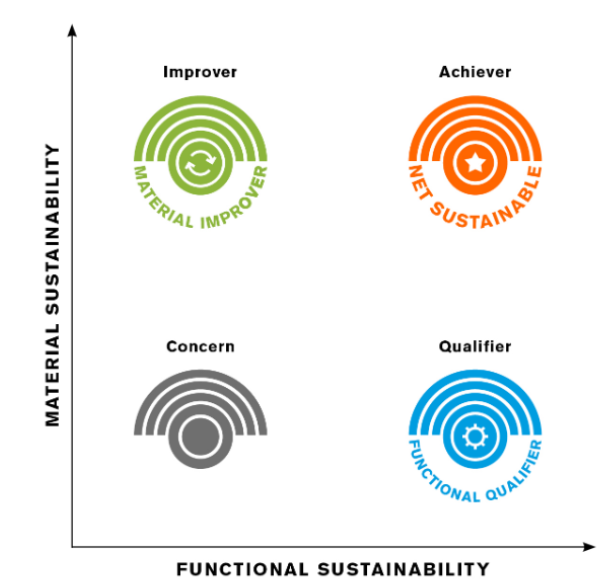Our BSI Matrix measures the systems’ sustainability
To measure our progress towards our ambitious targets, we have developed the Beckers Sustainability Index (BSI), a transparent product classification tool to map and visualize the sustainability of a coating system.
The BSI classifies the sustainable impact of coating systems via a material and functional dimension and thus provides a data-driven, objective means to measure and track development of our sustainable product portfolio. Furthermore, the BSI enables us to communicate the sustainable value of our current and future portfolio to our stakeholders in an objective, robust and reliable manner aligned with industry standards and key sustainability parameters. In order to simplify communication, all existing and new products are placed into one of four defined classes that uniquely reflect our products’ sustainability attributes.
Material and functional sustainability
The BSI describes the products’ sustainability from two complimentary dimensions, Material Sustainability and Functional Sustainability. These reflect our view that coatings’ sustainability is always a combination of both the sustainable nature of the materials and processes that are used to make coatings and how coatings are then used to add sustainable value to the article that is being coated, whether it is a building panel, a dishwasher, part of a computer or an earth excavator vehicle.
The indicator for functional sustainability within the BSI provides a measure of how much the applied coating contributes to improving the sustainability of the coated object. Sustainable functions can be related to improving product lifetime, improving product energy efficiency, reducing product material use, or even improving the wellbeing of the user of the object. Functional sustainability will be our competitive advantage in the future.

The four classes in the BSI
Four classes, each being defined by a certain combination of material (BSIM) and functional (BSIF) scores, are used to visualize a coating system’s sustainability.
1. Concern – Products with an issue in terms of sustainability. A product being sold will be excluded from Beckers’ portfolio latest 5 years after identified.
2. Improver – Products with improved environmental and climate footprint. It is characterized by sustainable raw materials and production.
3. Qualifier - Products which provide sustainable benefits to the end-user and society. It strengthens the coated object’s sustainability feature and performance.
4. Achiever – Products which achieve highest level of sustainability, both in terms of material and functional sustainability.
The Achiever: Net-sustainable coatings
Net-sustainable coatings are coatings that fulfill the highest standards in regard to functional and material sustainability. In other words, they are products that are placed in the Achiever class of the BSI coating system because they significantly improve the sustainability of the coated object and receive a high score in the material sustainability category.